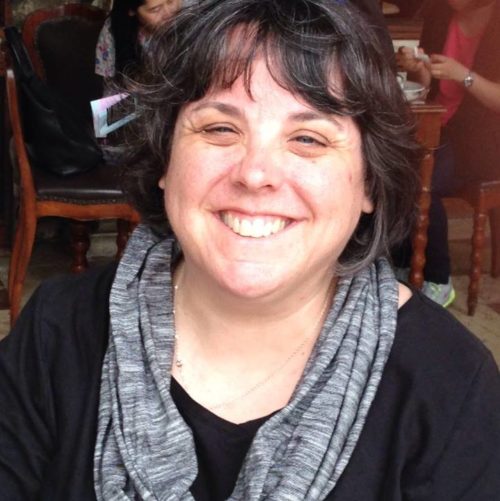Nineteenth-century novels are filled with women—strong, intelligent, ambitious women—looking for ways to survive in societies that seem to covet none of those three virtues for them. Whatever their class or wealth (from Jane Eyre to Middlemarch’s Dorothea to Edith Wharton’s women, to name only a few), these fictional women are in search of a plot where a woman might succeed, might make a contribution, might even overcome some of the restraints that conventional society has put upon them.
Born in 1840, Isabella Stewart Gardner (known as Belle) is a real-life example of a 19th century someone on just that relentless quest to make a life of meaning. In this new biography, Hope emerita professor Natalie Dykstra provides a deeply researched look at Gardner’s life, a life whose thesis is contained in the book’s title, “Chasing Beauty.” As Dykstra chronicles, that chase was lifelong, pursued all around the world, culminating in the foundation of the art museum that today bears Gardner’s name.
And what a chase. Beginning with a childhood as the daughter of a wealthy New York family, Belle has an education that includes significant time in Paris and visits across Europe. Her marriage to a rich Bostonian, Jack Gardner, plunges her into a climate less excited by her cosmopolitan ways. Boston society did not warmly welcome her, and she struggled to fit in with the stultifying social conventions expected of women of her class. Indeed, Dykstra queries: “What did she do with her days?” (65) and proceeds to outline the mind-numbing list of crochet and letter writing and piano playing and visits and gardens and balls, observing “[t]hese scripts for a woman’s behavior are elaborate, confounding, and sometimes laughable…She also chafed at the intricate social ritual whereby callers would pay brief morning visits….” (66-67).
Instead, when Belle and Jack lose their young son to illness and discover they will be unable to have more children, she is even more restless. The couple travels extensively and often—and the book’s portrayal of both the mode of travel and the many locations visited is an extra treat in many chapters of the book. But Belle pursues a life, fueled by curiosity not only through travel, but increasingly through educating herself about music and painting and literature. The book masterfully narrates her evolution as, what we might now term, both a “curator” and an “influencer.”
This evolution happens, in part, because of the conversations she cultivated and the circles in which she moved. In many ways, this book is as much about a time period and a milieu as it is about an individual woman. With a cast of thousands, the book features appearances from Mark Twain, Edith Wharton (though the two women didn’t really like each other), Henry James, Henry and Clover Adams, Oscar Wilde, Johannes Brahms, Nellie Melba, James Whistler, John Singer Sargent, Theodore Roosevelt, Arnold Schoenberg, and Charles Eliot Norton, to name only a few. Dykstra’s scholarly work is clearly evident in the interlacing connections of 19th and early 20th century America that she draws for the reader.
Still, Belle, the individual woman, with her trademark string of pearls, is the driving force of the narrative, described by a Boston journalist thusly:
Mrs. Jack Gardner is one of the seven wonders of Boston. There is nobody like her in any city in this country. She is a millionaire Bohemienne. She is eccentric, and she has the courage of eccentricity. She is the leader of the smart set, but she often leads where none dare follow. She is 35, plain and wide-mouthed, but has the handsomest neck, shoulders and arms in all Boston. She imitates nobody; everything she does in novel and original. She is as brilliant as her own diamonds, and is as attractive. All Boston is divided into two parts, of which one follows science, and the other Mrs. Jack Gardner. (90)
And in the years that follow, Belle’s accomplishments are many: an early and active member of the Dante Society, invited by Charles Eliot Norton, as only 1 of 7 women. She oversees incredible gardens. She takes courses at Harvard to learn more about art history. She hosts musicians and composers. She collects rare books and manuscripts and, of course, becomes one of the leading art patrons in America. She is the first to bring artists like Botticelli and Matisse to this country. In fact, Dykstra excels at portraying the ins and outs and ups and downs of art collecting in the period, including how the pursuit of the art market could also be obsessive and unhealthy.
Eventually, the biography turns to the construction of Fenway Court, the name of Belle’s marvelous, eclectic museum (now known by her name). Basing it on her home in Venice, Belle had an unstinting vision, which she carries forward in every aspect of the museum. And it is a vision—due to the terms of her will—that is still in evidence today, a hundred years later. If all you know about Isabella Stewart Gardner is that her namesake museum was robbed in March 1990 and that the robbery has never been solved, this biography will allow readers to see the museum and its founder in a much richer light.
Over the course of the book, Dykstra includes descriptions of the many portraits of Gardner—in part to show her importance as an artistic subject, but more importantly, to show her complexity and development as a character. In this finely textured work, Dykstra gives us a “high-spirited, flamboyant persona…but also someone engaged in a deep, ambitious pursuit of knowledge and beauty” (179). As such, Chasing Beauty is an important contribution not only to biography, but to enlarging the narratives of American women’s lives.

